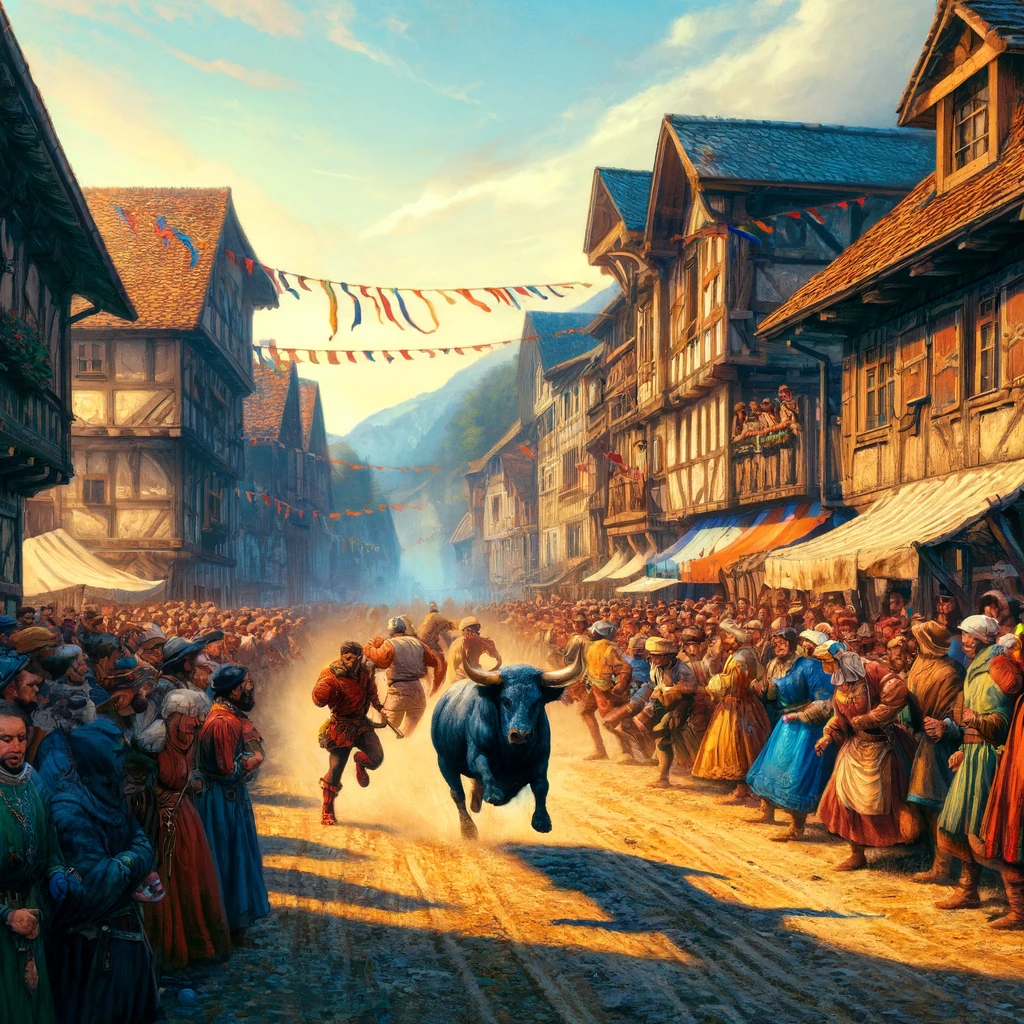Bullfighting is one of Spain’s oldest and most controversial traditions, with roots extending to other cultures of the Iberian Peninsula and beyond. Often seen as a blend of art and sport, this practice has generated both admiration and criticism over the years. We will explore the historical origin of bullfighting, its evolution, and the cultural imprint it has left on the world.
Ancient Roots
The spectacle we know today as bullfighting may trace its origins back to ancient Crete, where taurokathapsia, a ceremony in which young people performed acrobatics over the backs of bulls, was part of important rituals. However, the modern form of bullfighting has its more direct roots in medieval Spain, specifically in the rituals held during local festivities and fairs.
Medieval Evolution
During the Middle Ages, Spanish nobility practiced bull hunting as a training exercise for war. Over time, these events transformed into public spectacles. In the 12th century, bullfights began to be part of the celebrations of the coronation of Spanish kings and other important events of the royalty and aristocracy.
The National Fiesta

In the 18th century, Philip V attempted to ban bullfighting, considering it a bad example for the public and an unnecessary risk. However, the ban was unpopular and did not last long. During this period, bullfighting evolved from a spectacle of mounted knights to one on foot, which is the form it takes today. This transition marked the professionalization of bullfighting, and the figure of the matador began to take center stage.
The Modern Bullring
Over time, bullfighting became institutionalized and regulated. Permanent bullrings began to be built in major cities in Spain and Latin America, where the bullfighting tradition took deep roots, especially in Mexico, Colombia, and Peru. Throughout the 19th and 20th centuries, bullfights became mass events, with matadors elevated to the status of national celebrities.
Controversies and Future
In recent decades, bullfighting has faced increasing criticism and opposition from animal rights groups and sectors of society that consider it a form of animal cruelty. Several countries and regions have banned bullfighting, while in others, it is still celebrated and defended as an integral part of their cultural heritage.
The history of bullfighting is complex and multifaceted. While for some it represents a rich cultural tradition and an art form, for others it is a remnant of past times that no longer has a place in modern society. What is undeniable is that bullfighting has played a significant role in Spanish culture and has influenced numerous facets of its national identity. As society continues to evolve, so too will the fate of this ancient tradition.
Bullfighting is not just a cultural phenomenon, but a meeting point where history, ethics, politics, and social identity intersect, ensuring it will continue to be a subject of debate and analysis in the years to come.


Add a Comment
You must be logged in to post a comment